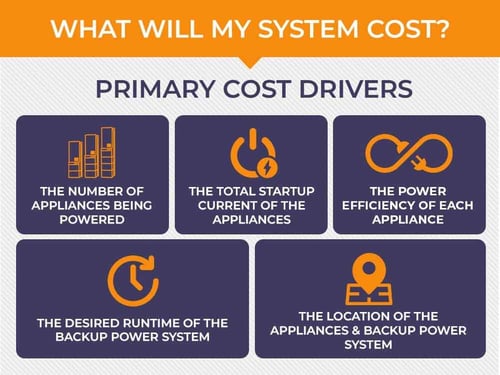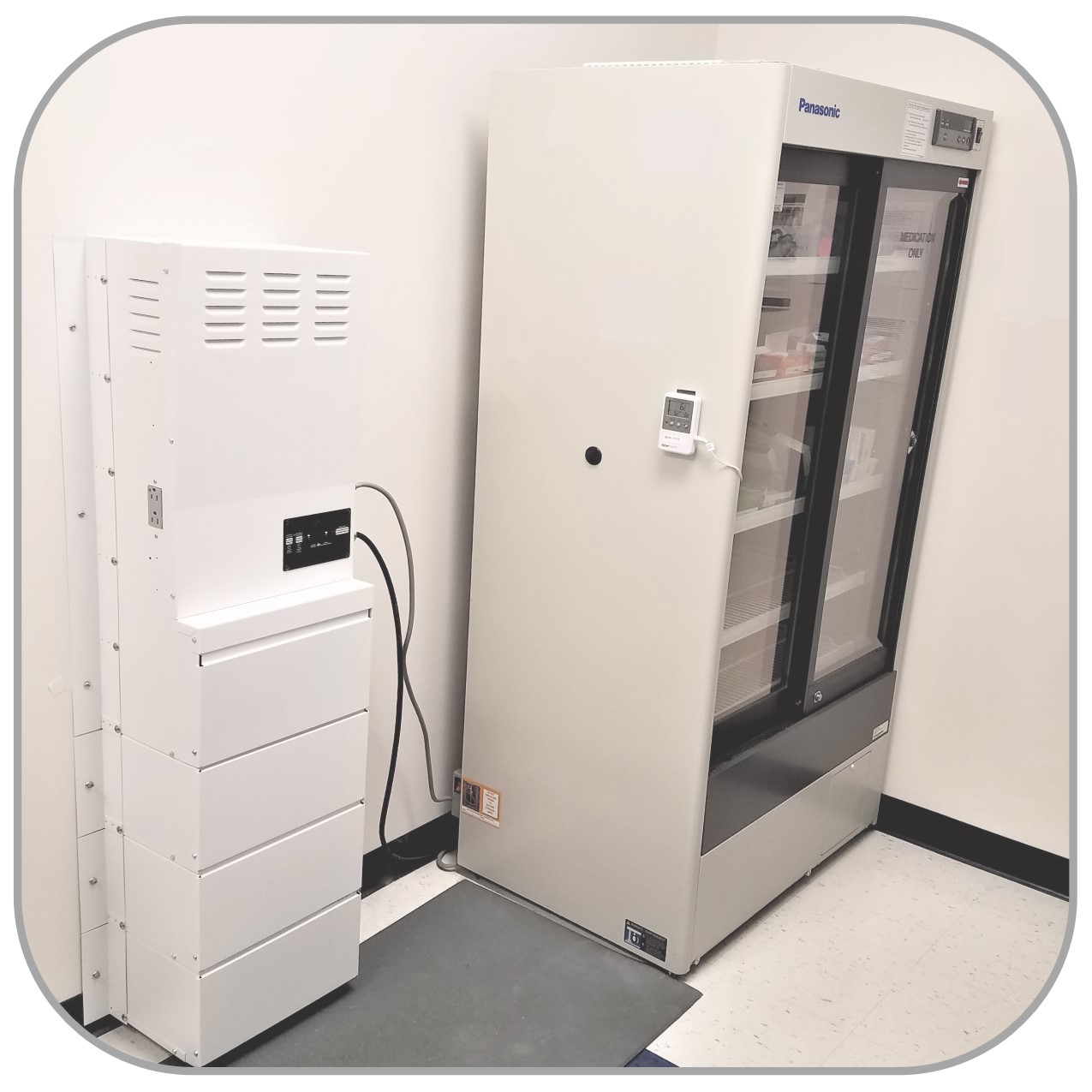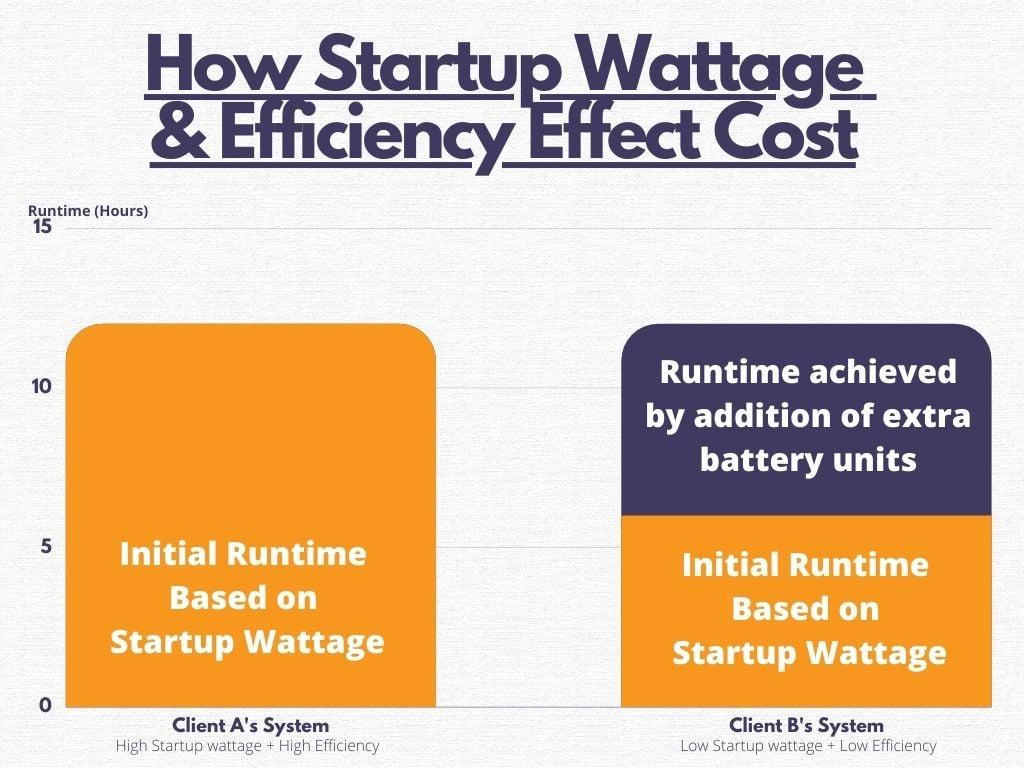We would like to hear from you
Contact Us!
Our sales and technical support staff are available 8-5 EST, Mon-Fri



Battery backup systems consist of several key components, with the inverter and batteries playing the biggest roles in determining power delivery and duration.
Think of it like a car:
Just as a gas tank has a limited amount of fuel, batteries have a finite energy supply before recharging. Similarly, an inverter has a maximum power capacity, often measured in watts or kilowatts.
As you add more appliances, the inverter approaches its maximum capacity, and the batteries deplete faster. Appliances might not receive sufficient backup power if the inverter can't handle the added load.
You might need a larger inverter and more batteries to support additional appliances, increasing the system's cost.
Note: Medi-Products systems include up to 8 A/C outlets, but the number of outlets does not necessarily indicate how many appliances can be supported.
We urge you to contact our technical support team for assistance before adding appliances to your system outside its original intended power load.
Read more about how adding more appliances can affect your system here.

Large medical-grade appliances, such as those with motors and compressors, require a brief but intense surge of power to start up, known as "in-rush current" or "startup wattage". This can be 3 to 6 times higher than the appliance's regular power consumption.
To handle this surge, battery backup systems include transformers to manage this high energy load. Inferior UPS products often fail here—especially with appliances like medical refrigerators. For instance, a typical consumer-grade UPS may not generate enough startup wattage to power a refrigerator’s compressor.
This is why appliances with higher startup demands, like ultra-low temperature freezers, cost more to support than those with smaller demands, like patient monitors or under-counter refrigerators.

When using a battery backup system to power an appliance, you can choose how long it will run. It could be just 15 minutes or even a few days.
But remember, batteries only store energy, they don’t make it. So, the system's runtime is set, and it won't last forever.
Think of it like driving a car—the farther you want to go, the more gas you need.
In the same way, if you want your appliances to run longer, you’ll need more batteries. And the more batteries you need, the higher the cost will be.


Efficiency is how much power an appliance needs to do its job. An efficient appliance can run longer on the same amount of energy than one that's less efficient.
Size, age, and design can affect an appliance's efficiency. For example, with a refrigerator, factors like:
All of these can change how much power it needs.
Less efficient appliances, especially older ones, need more energy to work. This means you might need more batteries to keep them running with a backup system, which can make it more expensive. Sometimes, it’s smarter to buy a new, more efficient appliance that costs less to run and needs fewer batteries.
You can usually find information about your appliance’s efficiency on its nameplate, in the manual, or online. If not, tools like voltmeters can measure how much energy it uses.
At Medi-Products, we have a large database of power data for many popular medical devices. This helps us quickly design the right backup system without needing extra power measurements.

Where your appliances are located doesn’t change the price of the battery backup system itself, but it can affect the project's overall cost. If the system has to be hardwired because there’s no space near the appliances or you need to power appliances in different areas, an electrician will need to install wiring.
The cost of this wiring can vary depending on how your building is set up and the electrician’s rate. For instance, if the electrical panel is far from the appliance, the wiring might cost more, raising the total project cost.
If surgery is done without the right backup power, the center might have to close temporarily, lose its important approval, or even put a patient in danger.
One storm, power surge, or mistake could risk tens of thousands or even $100,000 worth of vaccines, medicine, and lab supplies.
One client called us recently after losing over $70,000 of supplies at night without power because they didn’t have a proper backup system.
Backup power starts to pay for itself the first time your power goes out.
Every system-built meets every customer's needs in power and form factor. The quickest way to find the perfect system for you is to contact Medi Products directly.
To speak to our product experts, engineers, and sales teams about quoting a system and adding an alarm system, contact us via:
 |
1.800.765.3237 |
 |
sales@mediproducts.net |
Our sales and technical support staff are available 8-5 EST, Mon-Fri